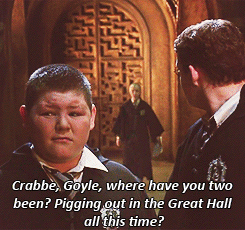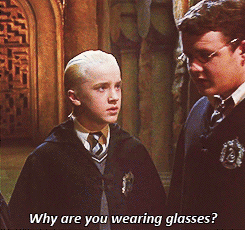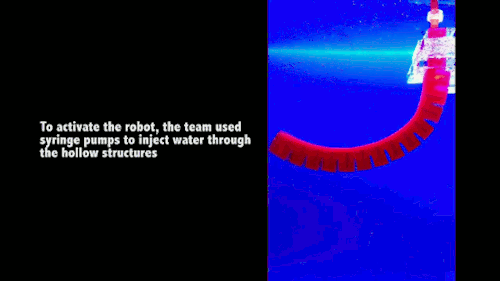14-year-old Richard Pierce, Western Union Messenger, Works From 7 A.m. To 6 P.m, Delaware, 1910

14-year-old Richard Pierce, Western Union messenger, works from 7 a.m. to 6 p.m, Delaware, 1910
via reddit
More Posts from Smparticle2 and Others

May 18, 1969 — Inside mission control at the Johnson Space Center, Houston, during the first day of the Apollo 10 mission. (NASA)








Fluid systems can sometimes serve as analogs for other physical phenomena. For example, bouncing droplets can recreate quantum effects and a hydraulic jump can act like a white hole. In this work, a bathtub vortex serves as an analog for a rotating black hole, a system that’s extremely difficult to study under normal circumstances. In theory, the property of superradiance makes it possible for gravitational waves to extract energy from a rotating black hole, but this has not yet been observed. A recent study has, however, observed superradiance for the first time in this fluid analog.
To do this, the researchers set up a vortex draining in the center of a tank. (Water was added back at the edges to keep the depth constant.) This served as their rotating black hole. Then they generated waves from one side of the tank and observed how those waves scattered off the vortex. The pattern you see on the water surface in the top image is part of a technique used to measure the 3D surface of the water in detail, which allowed the researchers to measure incoming and scattered waves around the vortex. For superradiance to occur, scattered waves had to be more energetic after interacting with the vortex than they were before, which is exactly what the researchers found. Now that they’ve observed superradiance in the laboratory, scientists hope to probe the process in greater detail, which will hopefully help them observe it in nature as well. For more on the experimental set-up, see Sixty Symbols, Tech Insider UK, and the original paper. (Image credit: Sixty Symbols, source; research credit: T. Torres et al., pdf; via Tech Insider UK)

Nardia - Central Park, New York City
Follow the Ballerina Project on Facebook, Instagram, YouTube, Twitter & Pinterest
For information on purchasing Ballerina Project limited edition prints.
Outfit by @blackmilkclothing Black Milk Clothing

Bobby Fisher playing 50 opponents simultaneously. He won 47, lost 1 and drew 2. 1964.
via reddit



A research group at MIT has created a new class of fast-acting, soft robots from hydrogels. The robots are activated by pumping water in or out of hollow, interlocking chambers; depending on the configuration, this can curl or stretch parts of the robot. The hydrogel bots can move quickly enough to catch and release a live fish without harming it. (Which is a feat of speed I can’t even manage.) Because hydrogels are polymer gels consisting primarily of water, the robots could be especially helpful in biomedical applications, where their components may be less likely to be rejected by the body. For more, see MIT News or the original paper. (Image credit: H. Yuk/MIT News, source; research credit: H. Yuk et al.)

Entering the house owned by a friend working in the private sector, the grad student anxiously reassesses many of his life choices.

Sketching out magnetism with electricity
In a proof-of-concept study published in Nature Physics, researchers drew magnetic squares in a nonmagnetic material with an electrified pen and then “read” this magnetic doodle with X-rays.
The experiment demonstrated that magnetic properties can be created and annihilated in a nonmagnetic material with precise application of an electric field – something long sought by scientists looking for a better way to store and retrieve information on hard drives and other magnetic memory devices. The research took place at the Department of Energy’s SLAC National Accelerator Laboratory and the Korea Advanced Institute of Science and Technology.
“The important thing is that it’s reversible. Changing the voltage of the applied electric field demagnetizes the material again,” said Hendrik Ohldag, a co-author on the paper and scientist at the lab’s Stanford Synchrotron Radiation Lightsource (SSRL), a DOE Office of Science User Facility.
“That means this technique could be used to design new types of memory storage devices with additional layers of information that can be turned on and off with an electric field, rather than the magnetic fields used today,” Ohldag said. “This would allow more targeted control, and would be less likely to cause unwanted effects in surrounding magnetic areas.”
Read more.

Zillertal Alps // Tom Klocker

touched by the sun
by Denny Bitte
-
 jasminecreates liked this · 7 years ago
jasminecreates liked this · 7 years ago -
 pyth1a liked this · 8 years ago
pyth1a liked this · 8 years ago -
 jgainesby liked this · 8 years ago
jgainesby liked this · 8 years ago -
 blueverde liked this · 8 years ago
blueverde liked this · 8 years ago -
 guennyboy6137-love reblogged this · 8 years ago
guennyboy6137-love reblogged this · 8 years ago -
 qahtan-art reblogged this · 8 years ago
qahtan-art reblogged this · 8 years ago -
 thebigkelu reblogged this · 8 years ago
thebigkelu reblogged this · 8 years ago -
 bvbd reblogged this · 8 years ago
bvbd reblogged this · 8 years ago -
 straightouttatshirt-blog liked this · 8 years ago
straightouttatshirt-blog liked this · 8 years ago -
 77yearwar reblogged this · 8 years ago
77yearwar reblogged this · 8 years ago -
 come-back-to-yourself reblogged this · 8 years ago
come-back-to-yourself reblogged this · 8 years ago -
 detroitsolo-blog liked this · 8 years ago
detroitsolo-blog liked this · 8 years ago -
 oranjeseliterature reblogged this · 8 years ago
oranjeseliterature reblogged this · 8 years ago -
 insaneanswer-blog liked this · 8 years ago
insaneanswer-blog liked this · 8 years ago -
 anythingyouimagine reblogged this · 8 years ago
anythingyouimagine reblogged this · 8 years ago -
 70s80sworld liked this · 8 years ago
70s80sworld liked this · 8 years ago -
 endlesslyunlimited liked this · 8 years ago
endlesslyunlimited liked this · 8 years ago -
 sevruis2626-blog liked this · 8 years ago
sevruis2626-blog liked this · 8 years ago -
 insidewarp reblogged this · 8 years ago
insidewarp reblogged this · 8 years ago -
 sgsg5656 reblogged this · 8 years ago
sgsg5656 reblogged this · 8 years ago -
 stephenearp liked this · 8 years ago
stephenearp liked this · 8 years ago -
 orarewegoingtofight liked this · 8 years ago
orarewegoingtofight liked this · 8 years ago -
 wahbegan reblogged this · 8 years ago
wahbegan reblogged this · 8 years ago -
 aliypop liked this · 8 years ago
aliypop liked this · 8 years ago -
 rifulsyoma liked this · 8 years ago
rifulsyoma liked this · 8 years ago -
 stanford-photography-plus reblogged this · 8 years ago
stanford-photography-plus reblogged this · 8 years ago -
 stanford-photography liked this · 8 years ago
stanford-photography liked this · 8 years ago -
 yugi-no-puzzle reblogged this · 8 years ago
yugi-no-puzzle reblogged this · 8 years ago -
 grehder-blog liked this · 8 years ago
grehder-blog liked this · 8 years ago -
 xpieterx-blog1 liked this · 8 years ago
xpieterx-blog1 liked this · 8 years ago -
 indazone1 liked this · 8 years ago
indazone1 liked this · 8 years ago -
 silkyjoe7 liked this · 8 years ago
silkyjoe7 liked this · 8 years ago -
 thoughtbubble443 liked this · 8 years ago
thoughtbubble443 liked this · 8 years ago -
 dredels-blog liked this · 8 years ago
dredels-blog liked this · 8 years ago -
 mickpro liked this · 8 years ago
mickpro liked this · 8 years ago -
 goodsongooddog reblogged this · 8 years ago
goodsongooddog reblogged this · 8 years ago